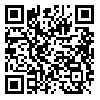دوره 13، شماره 6 - ( 8-1401 )
جلد 13 شماره 6 صفحات 838-815 |
برگشت به فهرست نسخه ها
Download citation:
BibTeX | RIS | EndNote | Medlars | ProCite | Reference Manager | RefWorks
Send citation to:



BibTeX | RIS | EndNote | Medlars | ProCite | Reference Manager | RefWorks
Send citation to:
Faridi F, Seyedebrahimi A, Khosrowabadi R. Brain Structural Covariance Network in Asperger Syndrome Differs From Those in Autism Spectrum Disorder and Healthy Controls. BCN 2022; 13 (6) :815-838
URL: http://bcn.iums.ac.ir/article-1-1671-fa.html
URL: http://bcn.iums.ac.ir/article-1-1671-fa.html
Brain Structural Covariance Network in Asperger Syndrome Differs From Those in Autism Spectrum Disorder and Healthy Controls. مجله علوم اعصاب پایه و بالینی. 1401; 13 (6) :815-838
چکیده:
Introduction: Autism is a heterogeneous neurodevelopmental disorder associated with social, cognitive and behavioral impairments. These impairments are often reported along with alteration of the brain structure such as abnormal changes in the grey matter (GM) density. However, it is not yet clear whether these changes could be used to differentiate various subtypes of autism spectrum disorder (ASD).
Method: We compared the regional changes of GM density in ASD, Asperger's Syndrome (AS) individuals and a group of healthy controls (HC). In addition to regional changes itself, the amount of GM density changes in one region as compared to other brain regions was also calculated. We hypothesized that this structural covariance network could differentiate the AS individuals from the ASD and HC groups. Therefore, statistical analysis was performed on the MRI data of 70 male subjects including 26 ASD (age=14-50, IQ=92-132), 16 AS (age=7-58, IQ=93-133) and 28 HC (age=9-39, IQ=95-144).
Result: The one-way ANOVA on the GM density of 116 anatomically separated regions showed significant differences among the groups. The pattern of structural covariance network indicated that covariation of GM density between the brain regions is altered in ASD.
Conclusion: This changed structural covariance could be considered as a reason for less efficient segregation and integration of information in the brain that could lead to cognitive dysfunctions in autism. We hope these findings could improve our understanding about the pathobiology of autism and may pave the way towards a more effective intervention paradigm.
Method: We compared the regional changes of GM density in ASD, Asperger's Syndrome (AS) individuals and a group of healthy controls (HC). In addition to regional changes itself, the amount of GM density changes in one region as compared to other brain regions was also calculated. We hypothesized that this structural covariance network could differentiate the AS individuals from the ASD and HC groups. Therefore, statistical analysis was performed on the MRI data of 70 male subjects including 26 ASD (age=14-50, IQ=92-132), 16 AS (age=7-58, IQ=93-133) and 28 HC (age=9-39, IQ=95-144).
Result: The one-way ANOVA on the GM density of 116 anatomically separated regions showed significant differences among the groups. The pattern of structural covariance network indicated that covariation of GM density between the brain regions is altered in ASD.
Conclusion: This changed structural covariance could be considered as a reason for less efficient segregation and integration of information in the brain that could lead to cognitive dysfunctions in autism. We hope these findings could improve our understanding about the pathobiology of autism and may pave the way towards a more effective intervention paradigm.
نوع مطالعه: Original |
موضوع مقاله:
Cognitive Neuroscience
دریافت: 1398/9/20 | پذیرش: 1399/3/25 | انتشار: 1397/8/10
دریافت: 1398/9/20 | پذیرش: 1399/3/25 | انتشار: 1397/8/10
| بازنشر اطلاعات | |
 |
این مقاله تحت شرایط Creative Commons Attribution-NonCommercial 4.0 International License قابل بازنشر است. |





